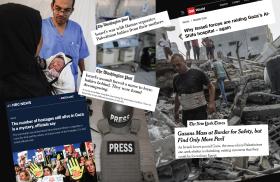In 1989, following a costly eight-year war with Iraq, Iran initiated a major military buildup intended to transform it into a regional power and rebuild its ravaged armed forces. Iran's buildup, coupled with indications of increased activism in its foreign policy -- including efforts to undermine the Arab-Israeli peace process, unilaterally overturn the political and territorial status quo in the Gulf (it is engaged in disputes with Bahrain, the UAE, and Qatar), and support subversive and radical Islamic opposition movements in Algeria, Jordan, Lebanon, and among the Palestinians -- raise disturbing questions about Iran's intentions, and the long-term implications of its growing military capabilities.
There are a number of elements to Iran's military buildup: Iran is seeking nonconventional (nuclear, biological, and chemical) weapons and the means to deliver them (missiles, bombers, and strike aircraft) to provide it with regional power status and the means to intimidate its neighbors and deter potential adversaries. Likewise, it is attempting to expand and modernize its conventional forces, with an emphasis on developing the air and naval capabilities needed to dominate the Gulf and defend Iranian airspace. It is doing this in accordance with lessons learned in two Gulf wars. This paper will examine Iran's military buildup in order to ascertain what it indicates about Iran's intentions. . . .
McNair Paper 29: Iran's Strategic Intentions and Capabilities


